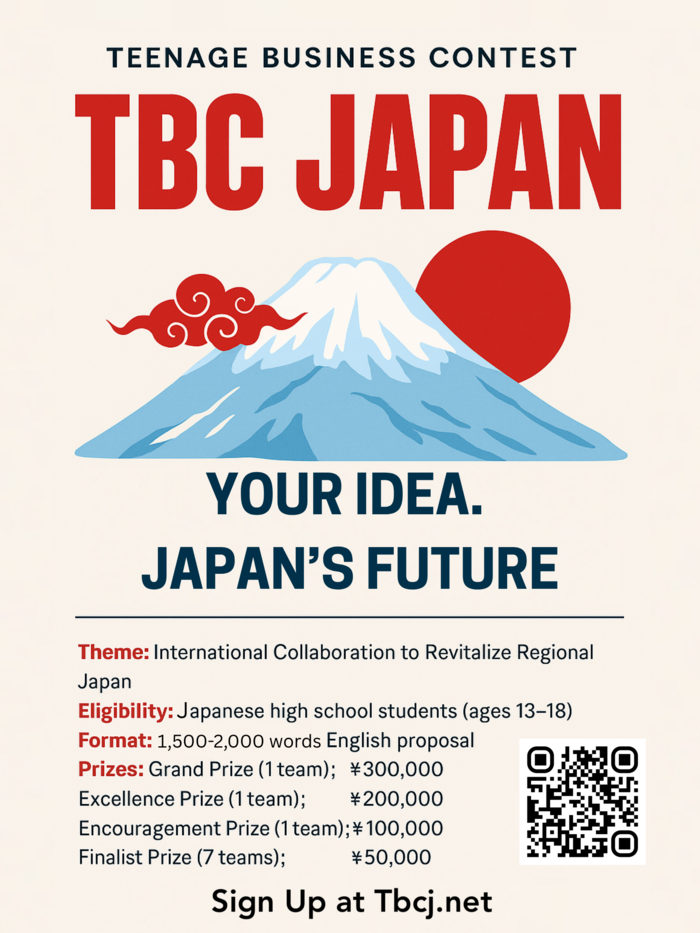Solving Tough Problems with Teen Ideas
The following reflection is a guest post written by Millie Gan, a student in the Spring 2025 Stanford e-Entrepreneurship Japan Program. Millie recently launched , a platform for encouraging social entrepreneurship among teens.
I believe that ideas from young people can help solve some of the worldŌĆÖs toughest problems; the voices of students are more essential than ever.
My name is Millie Gan, and I am a high school senior in San Diego and a participant in the Stanford e-Entrepreneurship Japan (SeEJ) program. I am a British national, born and raised in Tokyo. IŌĆÖm bilingual in English and Japanese, and studying Spanish. My mother is a third-generation Korean-Japanese, and my father is originally from Hong Kong. Though I have no ethnic roots in Japan, living there allowed me to appreciate and respect its people, traditions, and local diversity.
When I moved to the U.S. three years ago, I was surprised by the number of questions asked by peers and teachers about JapanŌĆÖs rural challenges, such as its aging population, shrinking towns, and what people were doing to help. I realized how giving younger people a voice can raise awareness of these urgent issues. That is why I created , a national contest that invites high school students across Japan to identify issues in rural areas and propose business solutions, all in English. The top 10 finalists will pitch their ideas live to judges from large corporations and academia. I had the drive to make TBCJ work, but SeEJ helped me execute that drive into action, giving me the mindset and community to take the project further than I could have alone.

SeEJ gave me a deeper understanding of what it means to lead with purpose and empathy. For example, Dr. Rie KijimaŌĆÖs session on design thinking taught me how to think from the perspective of those directly impacted. Dr. Damon HorowitzŌĆÖs lessons on ethical entrepreneurship helped me reflect on why I started this journey. Ms. Megan CarrollŌĆÖs insights into the nonprofit sector inspired me to treat TBCJ as a mission-driven platform, not just a contest. In one of our first VC sessions, I was partnered with another student for an exercise on creative problem-solving. My partner chose JapanŌĆÖs aging society and spoke passionately about the need to amplify student voices. At that moment, I remember thinking, ŌĆ£That is exactly what TBCJ is about.ŌĆØ That moment reminded me that while our concerns are local, our hopes are widely shared.
These lessons transformed how I approached leadership as I began to see every obstacle as a lesson. As I worked to grow TBCJ, I started to think more like an entrepreneur: solving problems while learning from them, adjusting my strategies, and staying true to my original mission.
One of the first things I had to figure out was securing sponsorship. I reached out to dozens of companies focused on education and regional revitalization. After many emails and meetings, I was fortunate to secure seven sponsors and raise over ┬ź3 million. This funding allowed us to provide prizes for the contest and recognize the efforts of students working to help the community.
Reaching students was another major challenge. Japan has nearly 4,800 high schools, but only 150 have strong English or international programs. I directly contacted the 100 schools that had available email addresses. At first, there was silence, and I remember refreshing my inbox, getting more and more frustrated each day, hoping for a reply. But slowly, after a few weeks, a few schools and their students began responding and signing up. That small breakthrough reminded me how wide the access gap truly is. Only around 17% of Japanese citizens hold a valid passport, compared to around 50% in the U.S., which shows how few Japanese students get global exposure. It made me even more determined to connect local youth with global perspectives and to use English as a bridge to opportunity.
The most difficult challenge was gaining official recognition. I applied to multiple Japanese Government offices for endorsement, but most declined due to government policies and TBCJŌĆÖs short history. Thankfully, the Cabinet Office met with me and offered support through their regional revitalization team. Soon after, the University of TokyoŌĆÖs Innovation Platform Co., Ltd. (IPC) offered its endorsement and created a new ŌĆ£UTokyo IPC Special Innovation PrizeŌĆØ for the contest.
Through this experience, and with the support of SeEJ, I have learned that we donŌĆÖt have to wait to make a difference. Entrepreneurship isnŌĆÖt necessarily about launching companies, but about identifying problems and solving them with purpose. I hope to continue expanding TBC Japan and encouraging more students to take initiative, because I truly believe that ideas from young people are what can solve these challenges. ItŌĆÖs our future, and it is up to us to protect and improve it.
If youŌĆÖre passionate about solving real-world problems, I highly recommend the Stanford e-Entrepreneurship Japan Program.
to participate in TBCJ.
Stanford e-Entrepreneurship Japan will start accepting applications for fall 2025 in August.
Stanford e-Entrepreneurship Japan is one of several online courses offered by 91│į╣Ž.
To stay updated on 91│į╣Ž news, and follow us on , , and .
Read More
Millie Gan, a current student of Stanford e-Entrepreneurship Japan, launches Teenage Business Contest Japan (TBCJ), a new social entrepreneurship platform for teens.































